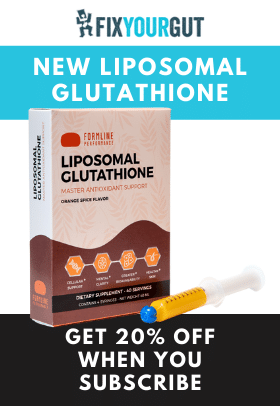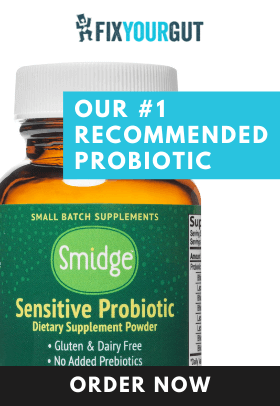The water you consume daily could be contributing to your health issues. Even when it appears to be crystal clear is often contaminated in our modern world. Plagued by everything from natural contamination to human-made pollution entering the supply, what you are drinking is just not as clean as what our ancestors consumed. Even in first-world countries, the water may not be as pure as you have been led to believe. Humans (like all living things) need pure hydration to thrive. Our body needs proper hydration—a huge part of what keeps us healthy. Rest assured, anyway that you can improve the quality of water you consume will directly contribute to your overall health.
On the Importance of Water
Water is needed by our bodies to maintain proper homeostasis (the baseline of health). We hydrate ourselves to maintain blood volume, regulate body temperature, flush out waste products with our kidneys, colon, and liver, dissolve minerals and nutrients for assimilation, carry nutrients and oxygen to our cells, improve digestion and prevent constipation, lubricate our joints, moisten tissue, and so much more! It is vital for our health.
The human body’s need for water is like a car’s need for engine oil. Oil helps lubricate different parts of the engine, and without proper oil levels and pressure a car engine seizes from friction. Without oil, your car’s motor would be destroyed and it would become completely inoperable.1 2
So when someone becomes dehydrated, it is like a car suffering from low engine oil. Whether it is a human “machine” or an automobile, it will have issues running, respectively, when low on water or low on oil. Dehydration occurs when someone does not consume enough water to replace what is being used or expelled from the body. We lose water even at rest, from what the body uses for essential processes like skin temperature regulation, urination, defecation, and exhalation. Dehydration results from extreme heat exposure, high-altitude sickness, over-exercise, vomiting, diarrhea, burns, frequent urination, and improper radiation exposure (including to EMF).
Hydration is essential for proper mitochondrial function and health. Without it, increased oxidative stress occurs, affecting cardiovascular and mental function, which may explain many of the symptoms of dehydration. Symptoms of mild dehydration include thirst, constipation, elevated heart rate, sunken skin and veins, headaches, brain fog, loss of appetite, fatigue, very dark urine, and dizziness. Severe dehydration can lead to fainting, lack of urination, low blood pressure, confusion, seizures, coma, and in severe cases even death.3 4 5 6
If you Google, “How much liquid should I consume daily to prevent dehydration and improve health,” you will find a wide variety of differing answers. I believe quality is just as important as quantity of water when it comes to proper hydration. An excellent book to read on how to measure and improve quality is The Fourth Phase of Water: Beyond Solid, Liquid, and Vapor by Gerald Pollack. Gerald Pollack’s life work is on then structure of water and how its structure is important to our health.
There is no set volume of liquid that should be consumed daily for proper health. Recommending a set amount to drink is too complex because there are too many factors at play, including weight, health issues, kidney function, diet, medications taken, and homeostasis loss during the day. General guidelines for proper hydration, however, are to consume quality water, make sure you get enough electrolytes in your diet (sodium, potassium, and magnesium), drink water when thirsty, and increase hydration when you are hot, feverish, constipated, vomiting, have diarrhea, or exercising.7 8 9 10
Dirty, Sickening Water
So how dirty is our tap supply? Many of us consume “filtered” water from our local municipality, which is under a degree of regulation. It must be filtered and pure, right?
Most of the water we consume is very polluted and contaminated. The supply filtered by your city and even the liquid in your well is not good for your health to consume unfiltered. Erin Brockovich (yes, she is a real environmental lawyer and activist portrayed by Julia Roberts in the film that shares her name) writes and lectures quite frequently about how dirty our modern supply truly is.
Here is a short list of what is found in the “clean” supply we consume—even water that is supposed to be filtered and treated by our municipalities:
- Birth control hormones
- H. pylori
- Medications (including SSRIs)
- Chemicals from manufacturing
- Chemicals from fracking
- Heavy metals and minerals
- Parasites
- Differing amounts of bacteria and biofilm
- Fluoride (most municipalities add artificial fluoride to drinking supplies “for our health”)
- Pesticides
- Chloramine
Our water has become increasingly sickening over the years. One reason is the increased use of chloramines instead of free chlorine to reduce colony-forming units of microbes in our supply. Chloramine (chlorinated ammonia) is difficult to remove from water, whereas chlorine can be easily removed by using activated charcoal filters. It is also not as effective as free chlorine (though it is cheaper), so biofilm formation occurs in water pipes frequently. Municipalities perform free chlorine flushing of their pipes at least twice a year to disinfect the pipes and reduce biofilm formation. You will notice when it happens, as the pungent smell of chlorine will reek from your tap while they clean out the pipes. H. pylori infections are increasing in the United States every year. Is it possible that inadequately treated tap water is a cause?11 12 13
Legionnaire’s disease cases are also on the rise—so much so that the number of cases has quadrupled in 15 years. Legionnaire’s disease is a serious rare bacterial pneumonia caused by the bacteria Legionella pneumophila. The disease gets its name from the first recorded outbreak of it at a 1976 American Legion meeting in Philadelphia. Legionella colonizes fresh water and is known to colonize improperly treated water in storage tanks, hot tubs, and cooling towers of large air conditioners. It is contracted by breathing in an aerosolized mist of the bacteria. Legionella is able to produce biofilm, which is why infection rates are on the rise. It can survive somewhat in chloramine-treated water, similar to H. pylori, because of its production of biofilm. I do not like the use of chlorine as a disinfectant in our supply, but it is easily filtered compared to chloramine, and it is efficient at disinfecting.14 15 16
Beyond problems with bacteria contamination, parasitical infections from inadequately maintained swimming pools are on the rise in the United States. Cryptosporidium infections from pools have doubled since 2014, and the parasite is difficult to eliminate from pools, immune to chlorine, and incredibly infectious. The parasite Giardia is also found in swimming pools and can easily survive moderate amounts of free chlorine. If you swim in a pool and end up with diarrhea, you are probably infected with either one of these parasites. On the rare occasion I swim in public pools, I do not dip my head, to avoid contracting a parasite orally.
There has also been a rise in the number of Naegleria fowleri infections, which is a brain-eating amoeba found in warm water. The amoeba can easily be killed with chlorine, but it is found in warm streams and lakes. Infections from improperly treated supplies and water from natural sources have occurred. It can enter the brain and cause fatal inflammation in the cribriform plate at the top of the sinus cavity. You can prevent contracting this deadly brain-consuming amoeba by using nasal plugs when you go swimming or using only cooled previously boiled filtered water for nasal irrigation.17 18 19 20 21
Industrial Chemicals and Medications in the Water
Fracking chemicals’ leaking into the supplies is a big issue for many rural towns and counties. Gasland is an excellent documentary on fracking and its adverse effect on tables. Many people have seen the exciting clip from Gasland where the homeowner lights their water on fire directly from the tap because of the excess natural gas and fracking chemicals that have infiltrated the local table causing the household supply to become unusable. Fracking not only can make your water flammable, but can make you ill from consuming the chemical-laden cocktail. The amount of water contaminated by fracking is unknowable at this time, as most labs lack the equipment to analyze the chemical cocktails used for fracking. Also, many companies use differing proprietary formulations, which makes it even harder to know what chemicals to test for in the supply.22 23
Contamination from manufacturing chemicals is also a major problem. Many are not tracked by the EPA, and it is unknown how clean our tap supply truly is. For example in my hometown, Fayetteville, North Carolina, the global chemical company Chemours was recently implicated in dumping GenX, a “safer” fluoromonomer (Teflon) downstream from my city into the Cape Fear River. It is unknown how long the dumping of GenX has been occurring, but it was found 70 miles downriver, being distributed in the supplies in towns further along the river and the Atlantic Ocean.
Treatment facilities are unable to properly filter GenX out of supply from the Cape Fear River, and it is unknown the actual effects the chemical might have had on the population who consumed it. Some studies have concluded that it may cause cancer and reproductive issues similar to the original chemical in the production of Teflon it was supposed to replace—PFOA. GenX, however, is safer than standard PFOA, but the amount released into the river was unregulated. It is truly unknown how many different chemicals we consume daily from (what we believe is) “purified” drinking water.24 25 26
Medications and birth control metabolites are regularly found in inadequately treated supplies. Antidepressants, antipsychotics, pain medications, antibiotics, blood thinners, benzodiazepines, and blood pressure medications have all been found in varying quantities within supposedly filtered and safe municipal supply. A U.S. Geological Survey of our nation’s streams and rivers showed that at least 80% of them were contaminated with low levels of medications. I am sure it has sadly increased since the early 2000s when the survey was taken.
According to the FDA, there are 40 million Americans affected by pharmaceutical-laden supplies. Health officials claim that the minute amounts of pharmaceuticals in our drinking supply pose little risk to humans, but affects aquatic life adversely. There are no federal or state regulations requiring pharmaceutical compounds to be monitored in supplies. We have little data on current concentrations and whether bioaccumulation of minute doses of medications in humans could cause drug interactions or health issues. Even if it’s not a problem for us now, it definitely could be in the future. At current levels, any medications found in municipal supplies are extremely diluted. However, it is a biomarker that should be continued to be monitored by your local supply testing agencies for drinking water safety.27 28
Birth control metabolites in improperly filtered supplies may be a larger issue than medications—at least that is what I thought. There are not many studies that indicate it as a widespread problem impacting human health. We have more studies of the metabolites’ causing breeding issues in the aquatic wildlife that swim in untreated water. Human studies bring up some valid points regarding where hormonal issues might be coming from if not from the water. For instance, we ingest hormones in the food we eat—from phytoestrogens in plants, to growth hormones in animal dairy, and plasticizers like BPA which disrupt our hormone cascades. So according to these studies, hormones in our diet may have a greater effect on our health. However, when I went to check for conflicts of interest in these papers, there was some serious cause for concern:29
“We thank B. Komm, S. Lundeen, and J. Obourn for their advice, assistance, and review at various stages of the assessment. We also thank E. Martin, H. Ferland, and V. D’Aco for their contributions in preparing the manuscript. Identification of published articles that report drinking water concentrations for estrogens was greatly facilitated by a database maintained by Pfizer Inc.”
“This work was funded and reviewed by Johnson and Johnson Pharmaceutical Research and Development, LLC; Pfizer Inc.; and Wyeth Inc.” 30
“The authors thank Reproductive Health Technologies Project (RHTP), who funded the internship under which this research took place, including providing valuable feedback.” 31
These disclosures of the studies’ sponsors appear to me to include serious conflicts of interest. They basically show birth control medication manufacturers and major lobbyists (including the David and Lucile Packard Foundation which heavily pushes the safety of birth control) colluding to prove their drugs are not found in sufficient quantities in our supply to affect our health. Is it possible that the birth control metabolite concentration in our supply is greater than we were led to believe, leading to hormonal issues in our population? We need more studies that are not funded by groups with vested interests in the results if we want to see if the estrogen amounts in our supply are truly a health hazard, as many in the natural health community believe them to be. 32
When you decide to dispose of your medications, it is no longer recommended to flush them down the toilet into the supply. Instead, you should mix the medicines with an unpalatable substance like dirt, used coffee grounds, or kitty litter, then place the remains in a sealed plastic bag in the trash. We can all perform the above recommendation to not further add medications into the supply, which would increase bioaccumulation and ill health in the public who consume it.33
Mineral concentrations can also differ among water sources, to the degree that some experience major health issues and others do not. Water contains beneficial minerals, in appropriate ratios that benefit health or inappropriate ratios that can cause significant harm. In certain water supplies, manganese, natural calcium fluoride, copper, calcium, and iron are elevated, which leads to many different health problems associated with hypermineralosis. Copper can also leach into the drinking water from copper pipes, especially in older houses, causing or worsening health issues.
If you consume bottled water, always choose water with higher amounts of magnesium and silica if possible. Also, look for a brand with lower amounts of calcium and manganese, which tend to be more problematic minerals that fewer people have deficiencies in. Heavy/radioactive metals/elements can also be a problem, depending on the level of contamination in the supply. This includes mercury, lead, aluminum, uranium, and cesium—just to name a few.
If you drink well water, it is best to get your water frequently tested (every six months at least) for heavy metals and minerals. Make sure you are filtering the water that is coming into your house from the well. People with municipal water should also test their water regularly, monitor the water quality reports from their local municipality, and filter their water to be safe. And unfortunately for many people that get their water from municipal sources, artificial fluoride is added “for their health” and difficult to filter out.34 35 36 37 38 39
The Problem of Fluoride in Water
Fluoride is a mineral added to our supply in certain amounts, supposedly to improve our dental health. The most common form of fluoride added to our supply in the United States is fluorosilicic acid, which is a byproduct of phosphate fertilizer manufacturing. The more-expensive form, sodium fluoride, is found in toothpaste and at the dentist. It’s interesting how they use a manufacturing byproduct to “improve” the quality of the public supply, and reserve the pricier sodium fluoride for oral care products and dentist offices.
Daily fluoride ingestion is hard to quantify, with concentrations varying widely from the unfiltered water we consume, our dental health products, some of the prescription medicine we take, and even the food we eat. A lot of food is grown using fluoridated water, and depending on the food it might have naturally occurring fluoride like tea leaves (which accumulates calcium fluoride—supposedly less of a problem). In 2015, the Department of Health and Human Services recommended a 0.7 mg/liter limit on fluoride in drinking water—way below the FDA maximum of 4 mg/liter—out of concern for excess fluoride consumption. That is a huge spread in recommended amounts for something added to the supply as a medication to “improve” oral health. All differing regulations in place, the average municipality supply has ended up with around 1–2 mg/liter.40 41 42 43 44
Excessive fluoride can do more than just cause enamel fluorosis. It can weaken bones and teeth, calcify the pineal gland, and disrupt thyroid function by interfering with its uptake and use of iodine. An estimated 40% of Americans suffer from enamel fluorosis, ranging from mild to severe, which can lead to dental damage. We can easily prevent dental caries without fluoride, simply by brushing with a xylitol-containing essential oil toothpaste, consuming less refined sugar, utilizing oil pulling, and taking vitamin K2. But I guess instead we should have a chemical mandated by the government to be added to our water and food supply to make up for people who don’t practice proper oral care. Then obviously we should have that same government fail to regularly monitor the average American’s daily consumption of fluoride or consider how it might be affecting their health.45 46 47 48 49 50 51
Pesticides in Drinking Supplies and Streams
Varying pesticide amounts, found more often in rural areas than urban areas, are an issue in drinking supplies. Most pesticide water contamination comes from the runoff of farms and commercial properties (like golf courses) which seeps into the table and contaminates local wells and supplies. Half of all shallow wells tested in the United States have been found with detectable pesticide concentrations, and 20% were found with pesticide levels that were of concern for human health. Fifty percent of United States streams contain concentrations of at least one pesticide exceeding the safety standards for aquatic life.
Most municipalities test their water supply regularly for pesticides, so the issue of pesticides in drinking water is less of a concern in urban areas. If you are drinking from unfiltered wells, you want to test your water a few times a year to determine its safety. Hopefully, more farms will try to lower their pesticide use, for instance by following integrated pest management. Plant more disease and pest resistant non-GMO crop varieties, practice crop rotation, use insects that do not damage the crops but keep pests and bay, and only uses pesticides when needed.52 53 54 55 56
How to Consume Healthier Water
Various experts and websites have differing opinions on what is the healthiest water to consume. Countless blogs and experts debate which form of filtration is best, slandering the types they do not like and exaggerating the various strengths and weaknesses of each. One expert might say, “Ozone is the best! It purifies better than anything else, with the added benefit that ingesting ozone has miraculous healing properties.” While another expert might say, “Ingesting ozonated water does nothing to improve health, and reverse osmosis is the way to go!”
How to Find a Pure Spring
One of the most discussed ways of getting better water in our modern age is straight from a spring. No form of modern purification is going to be perfect; ancient people consumed water from streams and springs since the dawn of time. That being said, is drinking from a spring the right way to go because it is paleo? Maybe, if the source is pure—but even then, I am sure many ancient people were sickened by contamination throughout history. There are increased (natural) heavy metal and mineral concentrations in some streams, and others could be filled with bacteria and parasites. However, spring water should be purer because it comes directly from the water table and is filtered by rocks and sediment.
There is a website dedicated to helping you find a local spring where you can hopefully get access to clean water. Go with the natural springs that have good reviews and have been tested. I recommend testing the spring periodically yourself to make sure the water you are consuming is high quality. A good idea to assure that spring water is free of microbial contaminants might be to filter it through activated carbon. Perfect, pure water is hard to find, especially in our dirty, modern world. I cannot tell you how to drink perfection, but I can give you some ways to consume healthier water and improve your health.
Filtering Your Water
When it comes to water filtration, the goal is to get it in its purest form possible, removing all possible contamination in the form of microbes and accumulated solids. The best way to reduce every kind of contaminant is distillation. My main issue with this method is that it can be very costly. Distillation is where you heat the water into steam and then capture the steam so that it condenses into pure drinking water. You want to make sure that your distillation machine also utilizes a carbon filter, as VOCs (volatile organic contaminants) like benzene can evaporate from the steam and running it through charcoal will reduce benzene to minute levels, improving purification.57 58 59 60
I also recommend reverse osmosis purification. Reverse osmosis is one type of filtration recommend by both Dr. Gerald Pollack (who mentions that it can reduce its EZ potential) and Jack Kruse. I consume reverse osmosis (RO) water frequently myself, and store it (and consume it) in glass bottles. Reverse osmosis water is not as pure, though, as it removes 90% or more fluoride from the supply, compared to 100% from distilled. I do like that a greater quantity of water can be purified in a short amount of time with RO machines and filters, and they are less expensive than distillers. RO does waste water, as does distillation, in the purifying process, making both relatively more expensive ways to purify water when it comes to utility costs. The reverse osmosis process filters by forcing water quickly through a semipermeable membrane, trapping most contaminants in the wastewater and leaving you with purified water on the other side of the membrane.61 62 63 64
Both Dr. Pollack and Dr. Kruse recommend restructuring the filtered water by 1) using a vortexer, 2) storing water in glass bottles exposed to sunlight, or 3) putting fresh organic fruit and vegetables in it to help restructure it. I do not recommend adding trace minerals, as most trace mineral supplements are rife with heavy metals and often have excess amounts of potentially harmful minerals like manganese, tin, mercury, radioactive minerals, cadmium, and lead.
Many experts claim that water purified by distillation or reverse osmosis can leech minerals from the body. It may be theoretically possible, but the leaching of various minerals can be made up by consuming a well-varied diet. Liberally applying pure salt on food and taking supplements like magnesium when needed can counteract this effect in some. I do not recommend adding salt to water anymore to replace minerals lost or leached from filtration. Dr. Pollack claims it can interfere with the EZ potential in supplemental amounts when added directly. Therefore, you should instead salt your food liberally to get your trace minerals.65 66 67 68 69
Whole house water purification also works very well, but the main issue I have with recommending a unit is the large upfront cost usually around a few thousand dollars. Whole house filtration filters do last for many years though, so it can become cost-effective over time. Also, they filter water throughout your entire house. You might need to hire a plumber to set up a whole house purification system because it’s quite labor-intensive.
I do recommend the Big Berkey, Alexapure, and Propur gravity-fed filtered purification systems for their portability and lack of need for electricity. You should definitely add the fluoride filters to the Big Berkey (Propur filters have it build in) to reduce the fluoride concentration (by at least 95%) in the water. The shells of the fluoride filters are made from plastic, so try not to purify too much water at one time, to avoid having the water in the bottom chamber come in contact with the outside of the filters. The gravity-fed filtration systems are however very slow and bulky, and filter replacement can be relatively costly. But you can purify large amounts at one time with them (depending on the size of the container), and the water is fairly pure. Both whole house and gravity-fed systems use many different types of filters, including activated carbon, zeolite, UV light, and copper and zinc stone.70 71
Ozonation has also been recommended for water purification. This method significantly reduces or even eliminates pathogens in the treated water, but it does not diminish heavy metals and unwanted mineral concentration. Ozonation changes naturally occurring bromide into bromate, which is worse for your health. So, if you choose it, an additional filtration method to reduce levels of heavy metals and unwanted minerals is required.
Standard activated carbon filters (faucet filters or pitchers) can reduce some contaminants including chlorine, pesticides, pathogens, pharmaceuticals, and some heavy metals like lead depending on the filter. But the “purified water” they produce is far from optimal. Simple activated charcoal filters leave behind chloramines and fluoride, so their purification capabilities are moderate at best.72 73 74
You might be wondering whether I still recommend Kagan or other bottled alkaline water. I do not recommend alkaline water ingestion in significant amounts anymore, even between meals—not even if you are suffering from silent reflux. Gargling with it when needed is fine. The stomach is supposed to be as acidic as possible, so consuming very high alkaline water (especially when the alkalinity is artificially elevated) can increase the pH of the stomach and hinder digestion. If you must drink alkaline water for the high mineral content (choose bicarbonate and magnesium over calcium), then consume it away from meals on an empty stomach. A word of caution, though: Elevating the pH in your stomach, even when empty, may lead to bacterial dysbiosis, including H. pylori that thrive in an alkaline environment in the stomach.75
Fix Your Gut–Approved Items to Improve Your Water Quality and Health
Water Purification Systems
Distillation
Reverse Osmosis
Under the Sink Options
- APEC Top Tier 5-Stage Ultra Safe Reverse Osmosis Filter System (ESSENCE ROES-50)
- iSpring RCC7 WQA Gold Seal Certified 5-Stage Reverse Osmosis Filter System – 75 GPD
- iSpring RCC7AK-UV 7-Stage Under-Sink Reverse Osmosis Filtration System with Alkaline Remineralization Filter and UV Sterilizer – 75 GPD – Contains an extra UV sterilization step, eliminating most pathogens from supply.
Countertop Options
Gravity-Fed
- Propur Big with 2 ProOne G2.0 7″ Filter Elements
- Big Berkey BK4X2 Countertop Filter System with Two Black Berkey Elements and Two Fluoride Filters AND Boroux Stainless Steel Spigot
Emergency Filtration
Whole House
- http://www.aquasana.com/whole-house-water-filters/500k-gallon-well-water – get the pro filter optional add-on.
Shower
- AquaBliss High Output Universal Shower Filter with Replaceable Multi-Stage Filter Cartridge
- Vitamin C Filter Inline Shower Assembly by Sonaki
Storage and Consumption Vessels
- Flaska Glass Bottle
- Klean Kanteen Reflect Bottle
- 2.6 Gallon Glass Grape Embossed Juice Beverage Container AND Stainless Works SSS010 Stainless Steel Beverage Dispenser Replacement Spigot
- 3 Gallon glass carboy – get a cork top to go with it.
Bottled Water Recommendations
- http://www.sswc.com
- https://www.acquapanna.com/
- http://highlandspring.com/
- https://www.hildon.com/
- http://www.tynant.com/
- http://www.speysideglenlivetwater.com/
- Pollack, Gerald. The Fourth Phase of Water Ebner & Sons, May, 2013. ↩
- Beers, Mark. The Merck Manual, Merck Research Laboratories, 2006. ↩
- https://www.jackkruse.com/quantum-biology-5-coherent-water/. ↩
- Pollack, Gerald. The Fourth Phase of Water Ebner & Sons, May, 2013. ↩
- https://www.jackkruse.com/emf-rx-the-top-ten-emf-faqs. ↩
- Beers, Mark. The Merck Manual, Merck Research Laboratories, 2006. ↩
- https://www.jackkruse.com/quantum-biology-5-coherent-water/. ↩
- Pollack, Gerald. The Fourth Phase of Water Ebner & Sons, May, 2013. ↩
- https://www.jackkruse.com/setting-up-your-water-system/. ↩
- Beers, Mark. The Merck Manual, Merck Research Laboratories, 2006. ↩
- http://www.sciencedirect.com/science/article/pii/S2090123213000970. ↩
- https://www.hindawi.com/journals/bmri/2015/914791/. ↩
- http://www.vce.org/ErinBrockovichChloramination.html. ↩
- https://www.ncbi.nlm.nih.gov/pubmed/25203696. ↩
- https://www.washingtonpost.com/news/to-your-health/wp/2016/06/07/legionnaires-outbreaks-cases-nearly-quadrupled-in-15-years/. ↩
- https://www.ncbi.nlm.nih.gov/pmc/articles/PMC3856027/. ↩
- http://www.businessinsider.com/cryptosporidium-parasite-swimming-pools-2017-5. ↩
- https://www.cdc.gov/healthywater/pdf/swimming/resources/cryptosporidium-factsheet.pdf. ↩
- https://www.cdc.gov/healthywater/pdf/swimming/resources/giardia-factsheet.pdf. ↩
- https://www.cdc.gov/parasites/naegleria/general.html. ↩
- https://www.cdc.gov/parasites/naegleria/index.html. ↩
- https://www.scientificamerican.com/article/fracking-can-contaminate-drinking-water/. ↩
- http://www.apmreports.org/story/2016/12/13/epa-fracking-contamination-drinking-water. ↩
- http://www.cbsnews.com/news/wilmington-nc-cape-fear-river-water-tainted-genx-dupont-chemours/. ↩
- http://www.wral.com/state-sets-new-healthy-level-of-chemical-genx-in-cape-fear-river/16820539/. ↩
- https://theintercept.com/2017/06/17/new-teflon-toxin-found-in-north-carolina-drinking-water/. ↩
- http://apps.who.int/iris/bitstream/10665/44630/1/9789241502085_eng.pdf. ↩
- https://www.scientificamerican.com/article/pharmaceuticals-in-the-water/. ↩
- https://www.ncbi.nlm.nih.gov/pmc/articles/PMC2854760/. ↩
- https://www.ncbi.nlm.nih.gov/pmc/articles/PMC2854760/. ↩
- http://www.rhtp.org/wp-content/uploads/2016/08/UCSFPaper.pdf. ↩
- https://www.packard.org/what-we-fund/population-reproductive-health/. ↩
- https://www.fda.gov/drugs/resourcesforyou/consumers/buyingusingmedicinesafely/ensuringsafeuseofmedicine/safedisposalofmedicines/ucm186187.htm. ↩
- http://www.health.state.mn.us/divs/eh/water/factsheet/com/copper.html. ↩
- https://www.cdc.gov/healthywater/drinking/private/wells/disease/copper.html. ↩
- http://idahowatersolutions.com/water-problems-solutions/iron-in-water-is-it-harmful/. ↩
- http://www.virtualacademia.com/pdf/health542_556.pdf. ↩
- https://www.ncbi.nlm.nih.gov/pmc/articles/PMC4144270/. ↩
- http://gotmag.org/the-root-cause-protocol/. ↩
- http://www.ewg.org/enviroblog/2011/02/fluoride-your-water-how-much-too-much#.WW5-gemQyUk. ↩
- https://www.hsph.harvard.edu/news/features/fluoride-childrens-health-grandjean-choi/. ↩
- https://www.ncbi.nlm.nih.gov/pmc/articles/PMC3956646/. ↩
- https://www.epa.gov/sites/production/files/2015-10/documents/2011_fluoride_questionsanswers.pdf. ↩
- https://www.adha.org/resources-docs/ADHA_Water_Fluoridation_Press_Release_4-27-15.pdf. ↩
- http://fluoridealert.org/issues/fluorosis/. ↩
- http://www.npr.org/sections/health-shots/2015/04/27/402579949/feds-say-its-time-to-cut-back-on-fluoride-in-drinking-water. ↩
- http://fluoridealert.org/studies/bone11_/. ↩
- http://www.icnr.com/articles/fluoride-deposition.html. ↩
- https://stopthethyroidmadness.com/fluoride-and-your-thyroid/. ↩
- https://www.ncbi.nlm.nih.gov/pmc/articles/PMC3890436/. ↩
- Nagel, Ramiel. Cure Tooth Decay, CreateSpace, Nov. 11, 2010. ↩
- http://www.npr.org/sections/thesalt/2013/07/09/199095108/Whats-In-The-Water-Searching-Midwest-Streams-For-Crop-Runoff. ↩
- http://pubs.acs.org/doi/pdf/10.1021/es072531u. ↩
- http://www.beyondpesticides.org/assets/media/documents/infoservices/pesticidesandyou/documents/watertesting.pdf. ↩
- http://www.beyondpesticides.org/resources/safety-source-on-pesticide-providers/what-is-integrated-pest-management. ↩
- https://www.epa.gov/managing-pests-schools/introduction-integrated-pest-management. ↩
- https://www.jackkruse.com/quantum-biology-5-coherent-water/https://www.jackkruse.com/quantum-biology-5-coherent-water/. ↩
- Pollack, Gerald. The Fourth Phase of Water Ebner & Sons, May, 2013. ↩
- https://www.jackkruse.com/setting-up-your-water-system/. ↩
- https://www.h2olabs.com/t-water-distillation-process-how-does-it-work.aspx. ↩
- https://www.jackkruse.com/quantum-biology-5-coherent-water/. ↩
- Pollack, Gerald. The Fourth Phase of Water Ebner & Sons, May, 2013. ↩
- https://www.jackkruse.com/setting-up-your-water-system/. ↩
- https://www.h2olabs.com/t-water-distillation-process-how-does-it-work.aspx. ↩
- https://www.jackkruse.com/quantum-biology-5-coherent-water/. ↩
- Pollack, Gerald. The Fourth Phase of Water Ebner & Sons, May, 2013. ↩
- https://www.jackkruse.com/setting-up-your-water-system/. ↩
- https://www.h2olabs.com/t-water-distillation-process-how-does-it-work.aspx. ↩
- https://selfhacked.com/blog/interview-with-dr-gerald-pollack-using-water-for-optimal-health/. ↩
- http://www.bigberkeywaterfilters.com/helpful-resources/faq/ [71. https://selfhacked.com/blog/interview-with-dr-gerald-pollack-using-water-for-optimal-health/. ↩
- https://www.propurusa.com/Lab-Reports_ep_48-1.html. ↩
- http://www.sciencedirect.com/science/article/pii/S004313540200458X. ↩
- http://www.imedpub.com/articles/effect-of-ozonation-on-pathogenic-bacteria.pdf. ↩
- http://www.delozone.com/files/ozone-overview-drinkingh2o-1999.pdf. ↩
- http://journals.plos.org/plosone/article?id=10.1371/journal.pone.0134116. ↩







Investing in water filters, water distillation, purifiers, water softeners seem very prodigal to me now. Yes, it is important to consume naturally purified water which can be achieved using structured water units.
Yes, structured water exists and there are devices that create a vortex that turns normal/regular water into naturally purified soft water.
Structured water is a new science that still lacks awareness. Has anyone used or at least heard of structured water? I would like to learn about your research and opinions.
Thanks
Whats your take on adding sea water 1:8 to distilled water?
For the folks who aren’t convinced yet, you can get your water tested you know! It’s real that if you’re drinking unfiltered tap-water, its not just h20 that you’re drinking. Many people everyday are getting sick from Nitrates, pharmaceuticals, arsenic, etc. It accumulates in your body over time.
We have tests showing that our drinking water filters remove 99% + of contaminants from your water and make specialized filters based on your needs. Chlorine is obviously the first thing to filter out, heavy metals, pharmaceuticals, fluoride, chloramines, etc.
We’re passionate about helping you improve your health by drinking cleaner, healthier water. Visit our website and call or email if you have any questions. http://www.Canadaionizers.ca
PS. We ship to USA
order from Canada and Save :)
I can’t help but notice that a PubMed search for Brisson or Hooper turns up… nothing. This blog has absolutely no scientific street cred. Use at your own risk…
Perhaps Messrs. Brisson and Hooper are not peer-reviewed/published. Who cares? One of the most talented students of anatomy I know (a long time massage therapist) is self taught. Just because Brisson and Hooper aren’t peer reviewed does not invalidate their analysis or their recommendations. Frankly, I was grateful to get supplement and nutrition based recommendations from this web site and Mr. Brisson’s book to treat chronic gastritis; whereas the my board certified GI doc had only two tools in his toolkit: PPIs and shrugged shoulders. I’ve tried several of the recommendations for gastritis, and guess what?! They are effective, inexpensive and have ZERO side effects. Most of us know that getting credible health related information from the internet is “buyer beware”. That said, if a person has done enough searching and reading on the internet on a health topic of interest, its pretty evident when you find good info vs BS. The claims made on this web site can be verified (or not) in by digging into the literature as you seem to be doing, rather than relying on a Brisson/Hooper peer reviewed paper. If your literature searching refutes claims made here, by all means let us know and cite sources.
We’ve been adding Himalayan pink salt to our RO filtered water to replace the minerals because we weren’t comfortable using the trace minerals. I guess we’ll be changing our approach. Do you have a recommended brand of vortexer?
https://www.structuredwaterunit.com/store/
I wondered about the Berkey. I got the travel one with the fluoride filters. They definitely touch the water, maybe I will see if I can put less water in, but there ain’t a ton of space….Hummmmm.